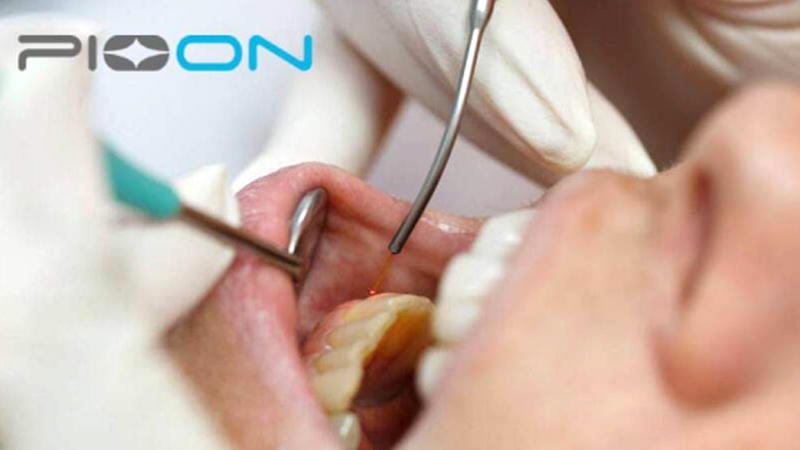
Dental laser is the use of lasers to treat a number of different dental conditions. It became commercially used in clinical dental practice for procedures involving tooth tissue in 1989.
Dental laser potentially offers a more comfortable treatment option for a number of dental procedures involving hard or soft tissue compared to drills and other non-laser tools.
Lasers can make dental treatments more efficient, cost effective, and comfortable. The Food and Drug Administration (FDA) has approved dental laser as a treatment option for several dental conditions.
The type of surgery that can be performed with a dental laser depends on the wavelength and power of the dental laser. Pioon dental laser can perform the following dental laser procedures. Including:
Teeth whitening.
Treating cold sores.
Treating a “gummy smile.”
Treating obstructive sleep apnea.
Treating tongue frenulum attachment.
Viewing tissues.
Nerve regeneration.
Removing benign tumors.
Removing soft tissue folds.
TMJ (temporomandibular joint) treatment.
Compared to non-laser treatment, they may be less expensive because the laser treatment is usually completed in fewer sessions.
Soft tissue lasers can be absorbed through water and hemoglobin. Hemoglobin is a protein found in red blood cells.
These lasers are used to treat periodontitis, including killing bacteria and activating tissue regrowth.
Soft tissue lasers seal nerve endings and blood vessels while they penetrate the tissue. For this reason, many experience almost no pain after laser treatment. The lasers also promote faster healing of the tissue.
Benefits of using dental laser over other methods
There is potentially a decreased need for sutures with soft tissue lasers.
Bleeding is minimized in treated soft tissues, as the laser promotes blood clotting.
With some procedures, anesthesia is unnecessary.
The chance for bacterial infections is lower because the laser sterilizes the area.
Wounds can heal faster, and it’s possible for tissue to regenerate.
The procedures may involve less damage to the surrounding tissues.